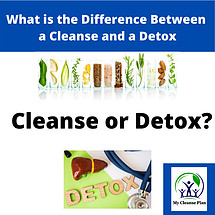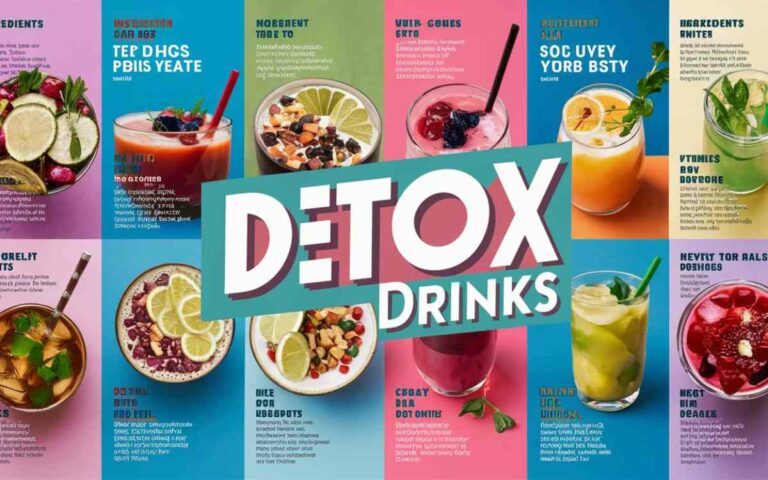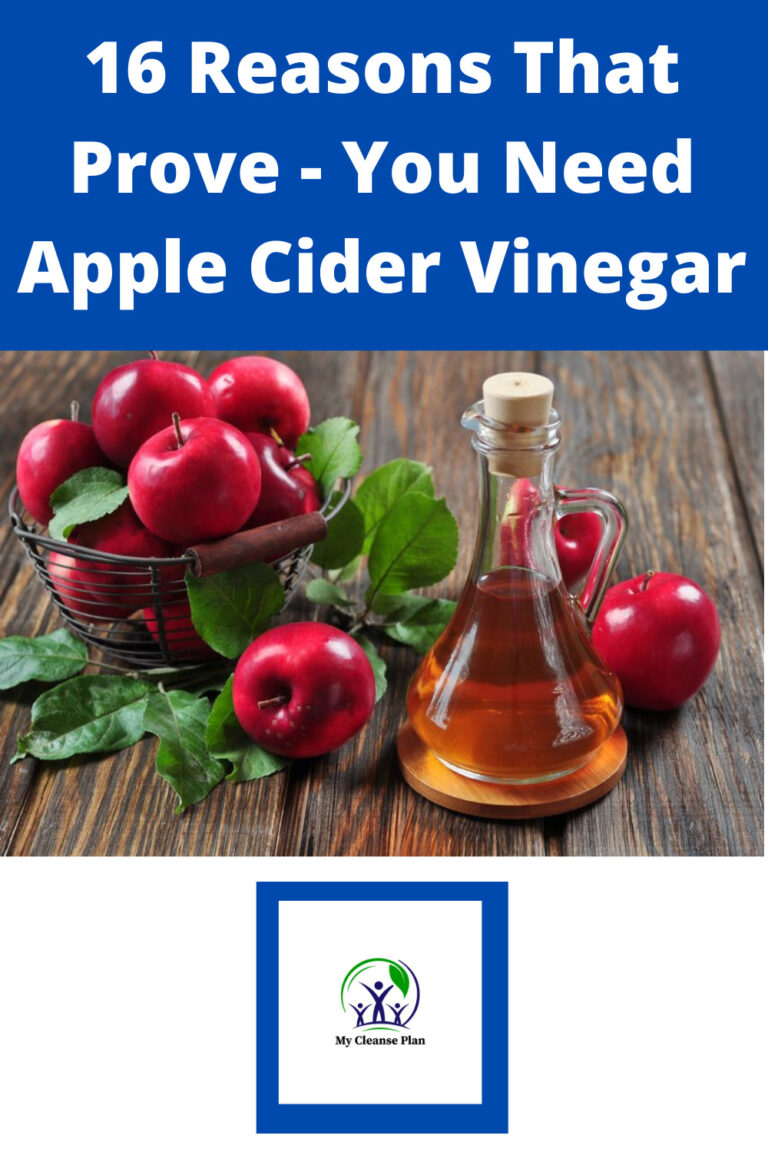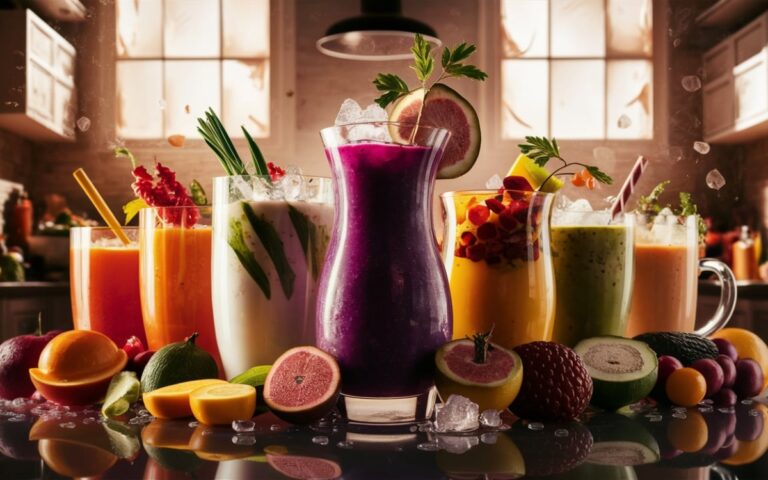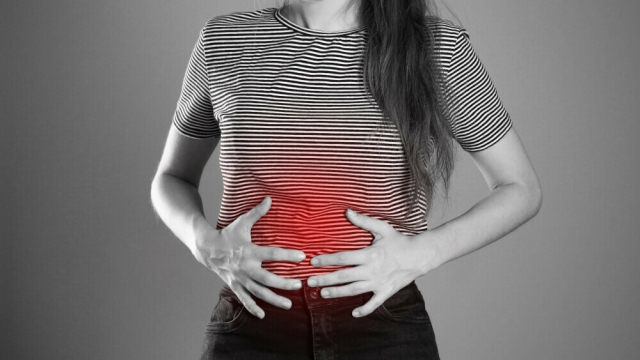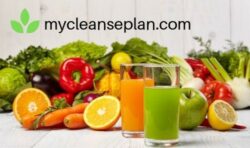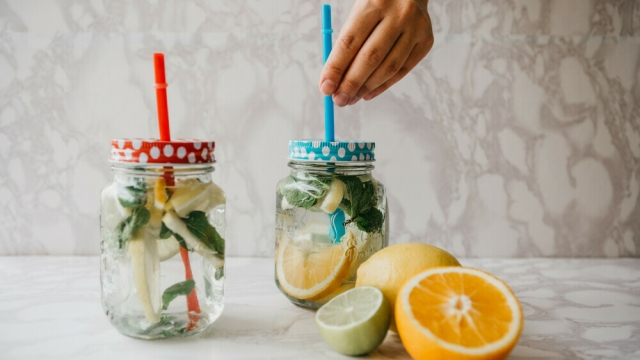What is the Difference Between a Cleanse and a Detox?

Many people have heard the terms detox and cleanse, whether they were reading up on their favorite celebrity or reading a health magazine. However, most don’t know what they are. And, even if they do have some idea, they use the two words interchangeably.
The truth of the matter is that cleanses, and detoxes are two very different things.
Both cleanses and detoxes have their own variety of rules and foods that are incorporated into the plan. Likewise, the results from detox and a cleanse vary significantly, too.
If you’re curious about starting a cleanse or detox plan, then you need to know the difference.
Knowing the differences between the two will help you understand which method will give you the desired results. This blog will share the distinct difference between a cleanse and detox. Let’s get cleansing!
What is a Cleanse?
You will often hear people say they are going on a cleanse when they want to lose weight or get healthy. Why? Because a cleanse has more to do with improving gut health than a detox.
A cleanse is great for those who are suffering from bloating and constipation. Plus, cleanses are simply a great way to remove excessive toxins in the digestive tract. In the end, the cleanser feels more revitalized, healthy, and energized.
Most of the time, a cleanse involves changing one’s diet. It often begins with the popular elimination diet.
This diet starts by removing foods from the diet that may be difficult for the digestive system to filter out. Such foods typically removed include alcohol, dairy, gluten, and processed foods. Some may even stop consuming eggs, meats, and soy.
At the same time, a cleanse also focuses on adding more nutrient-dense foods to your diet. These foods improve overall health. They also encourage the natural detoxification process that takes place in the body daily.
Some of the top foods needed for a cleanse include:
- Healthy fats. Yes, there are healthy fats. These healthy fats include extra virgin olive oil and avocados. Healthy fats provide the necessary energy for detoxification and biotransformation.
- Nuts and seeds. Nuts and seeds have a generous amount of fiber to encourage the elimination of toxins. You can consume almonds, walnuts, flax seeds, and more.
- Protein. Protein is necessary for your body to be healthy and function properly. Proteins also encourage phases 1 and 2 of detoxification. However, meat is eliminated during most cleanses. It’s best to get protein from seafood.
- Legumes. Legumes are also loaded with fiber and contain amino acids. Consider munching on beans and lentils.
- Fruits. Phytonutrients are found in fruit and are excellent at helping toxins out of the body. They also contain high levels of fiber, antioxidants, and water.
- Vegetables. Last but not least, a cleanse is filled with vegetables of all kinds. Vegetables contain fiber and phytochemicals. All vegetables should be consumed in high amounts. Some of the best veggies to add to the plate are leafy greens.
Related Article: How To Cleanse And Detoxify Your Body With Essential Oils
A cleanse is a great way to kickstart a healthier diet. It improves gut health and encourages natural detoxification. Cleanses typically solely involve dietary changes. Over time, you can add specific foods such as eggs and meat as long as you do not have an intolerance for them.
Cleanses typically only last a few weeks to a month. However, dietary changes, such as adding more vegetables to your diet, are generally ongoing. It is encouraged to lead a healthier diet after the cleanse.

What is a Detox?
While a cleanse focuses mostly on gut health, a detox revolves around liver and kidney health. Why is this important? Because these two organs are responsible for detoxing the rest of your entire
body. You simply can’t be in good health when your liver and kidneys fill with toxins.
A detox diet, which is also referred to as a detox cleanse, is another popular plan. However, a detox is far more restrictive than a cleanse. During a detox program, you will limit yourself to consuming a few foods known for highly tracking the detoxification system.
Some detox programs go as far as to restrict an individual from drinking tea a few times per day.
Related Article: Complete Body Cleansing and Strong Immunity Omnibus Review
This tea will have detox-friendly foods involved, such as lemon, ginger, and cayenne pepper. Other detox techniques use juice fasts. More evolved detoxes utilize a soup diet to ensure there are enough calories for general health.
Some of the top foods you can expect in a detox plan include:
- Lemons. There is a reason why lemons are a staple in a detox. They are loaded with Vitamin C, which is excellent for fighting free radicals and alkalizing the pH balance.
- Ginger. Ginger is an excellent digestive aid. It also has high amounts of antioxidants to increase overall immunity.
- Garlic. Garlic always seems to be the cure-all for any number of ailments. So why wouldn’t it be part of a detox, too? Garlic has antiviral, antibacterial, and antibiotic properties. It also contains allicin to improve protection from infections.
- Beets. Beets are superior when it comes to encouraging detoxification. It also has Vitamin C, magnesium, and iron.
- Green tea. Green tea is known for being a powerhouse in supporting detoxification thanks to its high amount of antioxidants. Overall, it encourages liver health, too.
- Fruits. Again, fruits are a part of a detox, thanks to their phytonutrients. The fiber improves digestion and encourages the elimination of undesired toxins.
It is not uncommon for supplements to be a part of a detox diet, either. These supplements are specifically designed to help the detoxification process happen more swiftly and efficiently. The top three must-haves during detox include:
- Milk thistle. Milk thistle has plenty of benefits. For one, it reduces inflammation. For two, it protects the brain and liver from unwanted toxins. Three, it decreases the risk of some cancers.
- Vitamin B-complex. B vitamins are necessary for operating the first phase of liver detoxification. With more B vitamins in the body, the liver has an easier time eliminating excess toxins.
- L-glutamine. This is another supplement that encourages the liver to do its job of detoxifying the body. Plus, it is a known supplement for improving overall gut health. It is handy for those suffering from leaky gut.
The main issue with a detox is that the diet is very restrictive. This is especially true during the water and/or juice fasts. During these detox fasts, the body might not get the nutrients it needs. This can cause a slew of other health problems.
The good news is detoxing typically only lasts a few days. Sometimes they can last as long as a week. Of course, the more restrictive the plan is, the more difficult it will be to complete. That is why this type of program is cut short.
Related Article: What Are Free Radicals And Why Are They Bad
What are Toxins?
When you hear the terms cleanse and detox, you will likely hear the word toxins involved. But most people don’t know what toxins really are.
Sure, most people are aware that cigarettes and alcohol are toxic to the body. But it’s more than just these substances that cause toxin buildup in the body.
Toxins are potentially harmful substances. They are found all around us. They can be found in your favorite foods in the form of pesticides. They are in the air you breathe. There are also toxins in daily skincare products, such as your moisturizer or face wash.
Can Toxins Build Up in the Body?
The good news is, your body is equipped to filter out most everyday toxins. The kidney and liver work to filter out toxins the second they are breathed or consumed. So is a detox or cleanse vital?
The answer is, yes. Although the body can filter out most toxins, sometimes these toxins build up in the body. This is especially true for those who don’t have a clean diet. This is also true for those who consume excessive amounts of alcohol or find themselves living in an area with low-quality air.
Over time, the body will not be able to filter out toxins as fast as they are coming in. Think of your liver and kidney as a drain. Sometimes, a drain can become clogged. A cleanse or detox can be significant when it comes to handling this buildup.
Related Article: What Is The Master Cleanse Diet
Signs of Toxic Build Up
Although it might sound scary, don’t worry – toxic buildup is not as frightening as it sounds. In fact, plenty of people deal with toxic buildup. Most of the time, they don’t even know it. How can this be? Well, think about the average person’s diet. Think about the air quality of some areas. It is relatively easy for your body to become overwhelmed with toxins Mycleanseplan.
When the liver and kidney become clogged, it causes toxic overload. Some of the signs and symptoms are relatively discrete, and some people will not give them a second thought. Some of the symptoms are more severe. The most common signs and symptoms of toxic overload include:
- Skin problems, such as rashes, acne, or rosacea.
- Intolerances/allergies to certain foods and smells.
- Digestive issues, including constipation, bloating, and diarrhea.
- Frequent colds and flu.
- Headaches.
- General aches and pains, especially in the lower back.
- Fatigue.
- Low energy levels.
- Inability to resist infections.
- Inability to lose weight.
- Not able to think straight, difficulty with memory.
Any one or a number of these symptoms can be a result of toxin buildup. The first solution would be to do a full detox. From there, you can make dietary changes that include a cleanse regularly.

Explore Also:
Creativehouseblog
Dietsheriff
Gigasecurehome
Final Thoughts
Cleanses and detoxes are both very popular. However, most people think they are the same. They vary in terms of diet and results, though. A cleanse is best for changing one’s diet and improving detoxification. Detox is more restrictive and focuses on a quick fix. Which one is right for you will depend on what you want as your final result.
Other articles you may find interesting are:
What Are Body Toxins – What Do Toxins Do
How To Choose The Best Cleanse Plan
What Are Free Radicals and Why Are They Bad
Here is a PIN that you can share with your friends on Pinterest:

